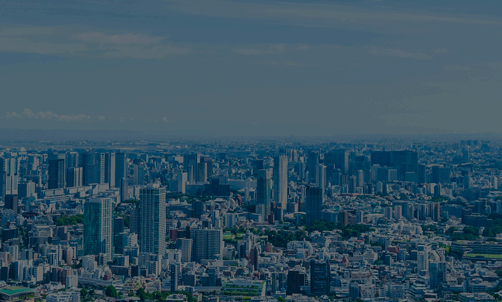- Home
- Sustainability Report
- Mitsubishi Materials Group's Initiatives on Material Issues
- Materials’ Forest
Strengthening Measures to Address Global Environmental Issues
Materials’ Forest
Preserving the Natural Environment
| Theme of activities | Results of activities during FYE March 2024 | Self- assessment |
Targets/plans for activities from FYE March 2025 onward |
|---|---|---|---|
|
|
A |
|
|
A |
|
|
|
A |
|
|
|
A | ||
|
A | ||
|
A |
|
|
|
A |
|
|
|
A |
|
|
|
A |
|
|
|
A |
|
Self-assessment grades A: Target achieved B: Target mostly achieved C: Target not achieved
Sustainable Management and Operation of Company-owned Forests
Basic Approach to Sustainable Forest Management
We currently own around 13,000ha of forestland in Japan, mainly in Hokkaido, making us one of the largest owners of forestland in the country. We previously began acquiring forests for the purpose of supplying wooden supports for our own mines and coal mining activities. However, due to the closure of our domestic mines and coal mining in general, our forests now fulfill different roles and are subject to different expectations.
We are managing the forests for the purpose of harnessing their ecosystem services in a high level. Those services include not only the production of lumber as a renewable resource but also the provision of public recreational spaces, the prevention of global warming through CO2 fixation, and the conservation of biodiversity.
Each of the company-owned forests varies by area in terms of location and environmental conditions, as do the functions they are hoped to fulfill. As such, we have adopted four categories (zoning) by which to divide the forests we manage: water and ecosystem conservation zones, health and cultural usage zones, selective natural forest cutting zones, and timber resource recycling zones. We specify what functions need to be improved and what management methods apply for each zone type. While thoroughly implementing this kind of meticulous forest management, we pursue “a "beautiful forest" that is more needed by society by making the most of its natural resources and maximizing its functions and utilization” as our vision for the next 100 years.
By way of outside recognition for sustainable forest management initiatives such as these, on October 1, 2012, we obtained certification from the Sustainable Green Ecosystem Council (SGEC) at Hayakita Forest in Hokkaido. Since then, the SGEC has implemented certification standards outlining transitional procedures for mutual certification with the Programmed for the Endorsement of Forest Certification (PEFC), an international forest certification scheme. With that in mind, we simultaneously obtained forest certification under the SGEC’s new standards for a total of eight forests in Hokkaido on September 1, 2015, including Hayakita Forest.

The Zoning of Company Forests and Management Policies
| Zone | Activity |
|---|---|
| Water and ecosystem conservation zones | Maintain the natural forest by the water and convert it into a natural forest if artificial |
| Health and cultural usage zones | Create a model forest and facilities for walking and other forms of forest recreation |
| Selective natural forest cutting zones | Produce useful broad-leaved trees in a sustainable manner by felling trees in naturally regenerated forests within a range not exceeding their growth |
| Timber resource recycling zones | Actively encourage tree-planting and thinning in the artificial forest cycle to contribute to decarbonization |
Data on Company-owned Forests
| 30 locations nationwide | |
|---|---|
| Total area | Approx. 13,000ha |
| SGEC certified area | Approx. 10,000ha
|
| Natural forest | Approx. 6,000ha |
| Artificial forest | Approx. 7,000ha |
Distribution and Scale of Company-owned Forests![[photo]](https://s3-ap-northeast-1.amazonaws.com/sustainability-cms-mmc-s3/img/esg_report/2024/02_env/forest/en/pic_syayurin3.png)
 Hayakita Forest
Hayakita Forest
The forest is laid out in a mosaic pattern, based on appropriate zoning between naturally regenerated forest (a forest made up of trees that have grown naturally), which has been conserved as a water and ecosystem conservation zone, and afforestation areas (trees grown from seedlings planted manually), planted with Japanese larch to be used as recycled resources for efficient lumber production.

Evaluation of the Economic Value of Public Benefit Functions of Company-Owned Forests
Our company owns one of the largest forests in Japan, known as the Materials’ Forests, which originated from mining development (ore production). These forests provide various public benefit functions, including timber production, water and soil conservation, and recreational spaces. These public functions benefit our daily lives in the form of ecosystem services.
In the Materials’ Forests, we are engaged in social contribution activities such as providing timber through forest maintenance and offering environmental education as part of our efforts to contribute to society toward nature-positive. We have decided to quantitatively assess the public functions that these activities provide and to estimate the economic value of the benefits gained from such management.
The benefits generated through forest maintenance, such as thinning, and social contribution activities, including environmental education events amounted to approximately \2.37 billion per year for 30 housing complexes (excluding benefits for biodiversity conservation). We decided not to include benefits for biodiversity conservation in the total of other benefits due to remaining issues in the calculation methodology, but we found that the benefits amounted to approximately \3.1 billion per year (see the figure below).
Since the evaluation reflects the management status of each housing complex, we will make use of the results in the development policies of each housing complex, and will proceed with efforts toward "beautiful forests 100 years from now," which is the goal of our company's forests. For details, please refer to the papers submitted at the Environmental Systems Research Paper Presentation Meeting.

- * This data is only available in Japanese on the website.
1. Contributing to a Recycling-Oriented Society
–Supplying Society with Sustainable Timber Resources–
Timber is an outstanding sustainable resource. We produce approximately 10,000 m³ of timber every year, mainly in timber resource recycling zones and selective natural forest cutting zones, and supply the timber to society as raw materials and fuels for a variety of products, from building materials to woody biomass fuels. We thus contribute to building a recycling-oriented society. To enable a sustainable lumber supply, we appropriately maintain and regenerate forest resources by following the management policy formulated for each zone. In timber resource recycling zones where we manage artificial forests, we maintain the cycle of cutting and planting trees, thereby ensuring a sustainable, stable supply of lumber from needle-leaved trees such as cedar and Japanese larch. In addition, in selective natural forest cutting zones, we keep forests vital and sound by promoting thinning and selective cutting (cutting selected trees) within a range not exceeding their growth, as well as appropriate natural regeneration (sprouting young trees from seeds which fall to the ground naturally). Thus, we aim to achieve sustainable supply of timber from broad-leaf trees. In natural forests, a wider variety of tree species coexist than in artificial forests. Accordingly, appropriate and extensive knowledge and skills corresponding to a wide variety of species are necessary when managing natural forests. We therefore strive to improve our knowledge and skills related to natural forests through initiatives such as inviting a Swiss forester with a wealth of knowledge on the management of natural forests to teach.
In Japan, many natural forests were replaced with artificial forests in the post-war period. Therefore, the depletion of forest resources, particularly the depletion of broad-leaf trees growing in natural forests, has been a chronic problem. Accordingly, the furniture industry has been forced to increasingly rely on imported timber, which constitutes the majority of the raw materials they use, because many of their products are made of timber from broad-leaf trees. We are attempting to convert parts of artificial forests into natural ones in our efforts to restore broad-leaf tree resources. In addition, to promote the cyclical use of timber from broad-leaf trees produced in Japan, we have chosen our own offices as the places to begin. We utilized timber from broad-leaf trees produced in our company-owned forests for the tables in the Company cafeteria of the head office, as well as the office furniture, etc. including meeting tables and chairs for Sapporo Office, where the forest management division is located.
 Supplying timber from forest thinning to society
Supplying timber from forest thinning to society

 A big table at the Company cafeteria of the head office
A big table at the Company cafeteria of the head office
- School Utilizing Timber from Company-owned Forests Opens in Hokkaido
-
 School building using timber from our company-owned forest
School building using timber from our company-owned forest Raw Japanese larch logs cutting for maintenance of the Hayakita Forest, which is owned by the Company, were used for the beams, columns and other members of the new school building of an integrated elementary and junior high school for compulsory education in a town opened in April 2023, where our company-owned forest is located.
2. Contributing to the Local Community
–Forests Where Local People can Relax and Interact with the Wonders of Nature–
As well as being company assets, our company-owned forests are an important element of the environment, in terms of shaping the local area. We contribute to local communities through appropriate forest management, which improves the quality of ecosystem services, including watershed protection, prevention of soil loss and recreation.
Company-owned forests located on the outskirts of urban areas meanwhile are positioned as “environmental forests,” parts of which are open to the general public to enjoy the natural environment up close. Located in the Teine area of Sapporo, Teine Forest is blessed with a slice of rich forestland that also has excellent transport access from the city center. We open up part of the forest to the people of Sapporo as a public forest, for purposes such as nature walks and camping ground. We also provide access to fields for nature activities organized by a local NPO and for research by universities and other institutions. That is why it is important to maintain an environment that is suitable for each of these purposes, so that everyone in the local community is able to use our company-owned forests in a meaningful way. In addition, we are proactive in activities such as thinning trees to add light to the interior of our forests, removing dangerous trees, and creating and maintaining paths in the forests. Instead of just offering our company-owned forests for use by local residents, we implement initiatives such as tree planting festivals, tree growing festivals, and other environmental events in our forests to teach local people about the value and fun that forests provide, including their biodiversity. We also actively pursue support activities in areas that were affected by natural disasters in the past. We worked on the recovery of a forest owned by Mori Town, Hokkaido, which was damaged by the typhoon in 2016. We also donated Christmas trees from our company-owned forests to local nurseries in Atsuma Town, which were affected by the Hokkaido Eastern Iburi earthquake in 2018, and continue to pursue activities including the donation of wooden graduation certificates made using the wood waste of broad-leaf trees generated in forest maintenance to preschools that use Materials Forest as a place for contact with nature.
We continue to contribute to local communities through these kinds of active initiatives and increase our efforts to make the forests of Mitsubishi Materials into valuable features of their local areas.
 An environmental event making tree name plates in a company-owned forest
An environmental event making tree name plates in a company-owned forest
 A Christmas tree sent to a nursery in Atsuma Town, which was affected by the Hokkaido Eastern Iburi earthquake
A Christmas tree sent to a nursery in Atsuma Town, which was affected by the Hokkaido Eastern Iburi earthquake
- Providing Opportunities for Local Elementary School Students in Areas Where Company-owned Forests are Located to Learn About Forestry
-
Forestry class by employees (Kamiatsuma Elementary School, Hokkaido)
Hands-on Forest Programs at our Materials’ Forests (SDGs Event Organized by Sapporo City Children’s Association Development Group)
As part of our educational program for elementary schools in cities and towns where our company-owned forests are located, in addition to conducting classes about forests, we have offered our “Materials' Forests” for hands-on forestry experience. Under the program, after learning about forests through classes and videos, the students actually observe and experience activities such as tree planting and forest cutting work. This provides the opportunity for children to learn about forests in greater depth, and also deepens ties between the Company and the local community.
3. Contributing to a Decarbonized Society
–CO2 Fixation–
One of the important ecosystem services of forests is CO2 fixation. As one of the largest owners of forestland in Japan, we dedicate ourselves to the steady promotion of appropriate forest maintenance, and do our level best to enhance the CO2 fixation capabilities of the trees in our forests, so that we can do our best to prevent global warming. The current CO2 fixation capabilities of our forests are estimated* to be 44,000 tons of CO2 per year (equivalent to the annual amount of CO2 emitted by approximately 23,000 people).
The ability of trees to fix CO2 peaks during the period when they are young or middle-aged, and gradually declines thereafter. That is why we make every effort to regenerate our forests, by cutting and planting new trees at the right time, or through natural regeneration, in order to maintain CO2 fixation capabilities over the long term.
We also strive to fix CO2 in forests by promoting the active use of usable timber from forest thinning, which is a forest maintenance measure, instead of leaving this timber in forests. We place priority on the production of high-quality, large-diameter timber to be used over long time frames, as building materials or for furniture for instance. This is another of our initiatives for effective CO2 fixation.
- * Method of calculation
Growth (m3) x material volume weight (t/m3) x carbon conversion efficiency x tree/trunk ratio x CO2 molecular weight / carbon molecular weight
 Largely grown japanese larch
Largely grown japanese larch
Relationship between Tree Age and Carbon Absorption/Emissions 
- * This data is only available in Japanese on the website.
4. Conserving Biodiversity
–Maintaining an Environment Suitable for a Wider Range of Wildlife–
Our company-owned forests are extremely important as a habitat for a diverse range of wildlife. We therefore take the utmost care to ensure that our various activities, including timber production, do not have a detrimental impact on living organisms.
In particular, forest ridge and riverside areas are migration pathways for creatures. They are called green corridors because those forests are extremely important for expanding the habitat of wild animals and allowing their interactions. We therefore prohibit clearcutting these forests, in principle. We also refrain from clearcutting large areas of land even in artificial forests, where we proactively produce timber, because it may reduce biodiversity in those forests. Instead, we clearcut small, dispersed areas. In addition, we are planning not to clearcut artificial forests which are judged difficult to manage efficiently. We aim to nurture these forests into natural forests with richer biodiversity. We have also introduced trial forest maintenance methods in selected areas, aimed at conserving biodiversity. These include multi-layered forest management that prevents creating completely bare areas following cutting operations, and pursuing mixed forest management between coniferous and broad leaf trees in certain areas, in order to leave naturally invasive broad-leaf trees in areas in which coniferous trees are the main user of resources, thus giving the forest a more diverse structure. By developing various types of forests in this way, we are striving to increase the diversity of the overall forest environment, thereby contributing to conserving biodiversity.
We also proactively monitor wildlife. As well as recording wildlife sightings during regular patrol activities, we have positioned a large number of wildlife survey sites in our forests, where we regularly inspect the wildlife living there and confirm the positive or negative impact of our forest maintenance. In particular, when we do forest maintenance involving cutting, we separately carry out monitoring surveys before and after, to confirm that wildlife has not been affected. If any rare species are found in an area in a monitoring survey before cutting, we change the time or method to one that will not affect those species, or consider the postponement of the planned maintenance.
Rare species that have been confirmed to be living in the area (most endangered species included on red lists published by the Ministry of the Environment and Hokkaido Government) are included in our own red list of rare species living in Mitsubishi Materials company-owned forests. We issue warnings to all involved parties with access to the relevant forests to conserve biodiversity, such as by holding regular training sessions for them.
 Daily monitoring activities
Daily monitoring activities
 Wildlife camera trap
Wildlife camera trap
 Japanese sable
Japanese sable
 Black woodpecker
Black woodpecker
 Masu salmon
Masu salmon
 Japanese primrose
Japanese primrose
 Dogtooth violet
Dogtooth violet
Biodiversity policy in company-owned forests
- In carrying out operations, in accordance with the separately specified 'Guidelines for operations in consideration of the conservation of biodiversity', consideration shall be given to maintaining a healthy forest with a good balance of diverse vegetation and diverse stages of growth and to conserving the environment in which valuable plants and animals grow, in order to maintain and conserve biodiversity.
- Identify species of valuable natural vegetation and animals with high potential for growth and habitat, distribute a 'List of valuable natural vegetation and animals' to staff and contractors (workers), and have them carry it with them when they visit the site for monitoring.
- Promote activities that contribute to the conservation of biodiversity, such as the Nationally Certified Sustainably Managed Natural Sites, in order to contribute to Nature Positive and the 30by30 target.
- Organize on-site training sessions by experts to improve the knowledge of staff.
(Excerpt from a company forest management and administration plan)







